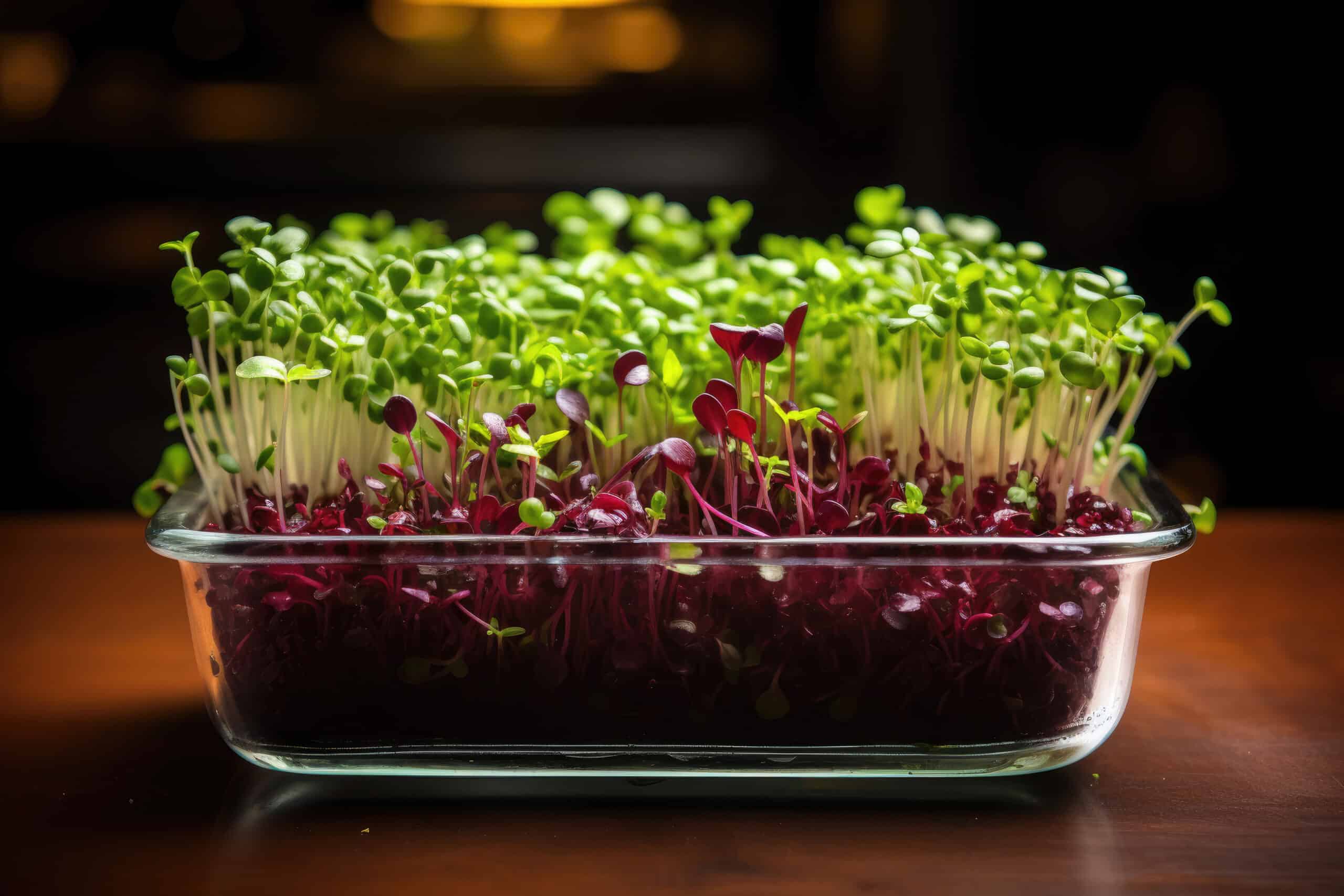Can I Eat Microgreens Instead of Vegetables?
Key Takeaways
- Microgreens are packed with nutrients and can contain up to nine times more nutrients, vitamins, minerals, and antioxidants compared to their mature counterparts.
- Microgreens offer higher nutrient levels compared to mature vegetables, such as higher levels of vitamins, carotenoids, and polyphenols.
- Microgreens should not replace a varied and balanced diet that includes a range of vegetables, as the cost and availability may limit their consumption.
Microgreens have gained popularity in recent years due to their concentrated nutrients and potential health benefits. Many people wonder if they can replace vegetables with microgreens in their diet. In this article, we will explore the nutritional value of microgreens, how they compare to vegetables, and whether they can be a suitable substitute.
The Nutritional Value of Microgreens
Microgreens are young seedlings of vegetables and herbs that are harvested in their early growth stage, typically within 7-14 days of germination. Despite their small size, microgreens are packed with nutrients. According to various studies, microgreens can contain up to nine times more nutrients, vitamins, minerals, and antioxidants compared to their mature counterparts.
Microgreens are rich in essential nutrients such as potassium, iron, zinc, magnesium, and copper. They also have higher levels of vitamins, including vitamin C and vitamin E, and carotenoids compared to mature crops. Carotenoids are plant pigments that have antioxidant properties and are beneficial for eye health.
Furthermore, microgreens are a good source of polyphenols, which are plant compounds associated with a lower risk of heart disease. Some preliminary research suggests that microgreens may also have potential health benefits for Alzheimer’s disease, diabetes, and certain types of cancer. However, it is important to note that more research is needed to fully understand the specific benefits of microgreens.
Microgreens vs. Vegetables
While microgreens offer numerous nutritional benefits, it is important to remember that they should not be seen as a complete substitute for vegetables in your diet. Microgreens are a nutritious addition to meals, but they should complement a varied and balanced diet that includes a range of vegetables.
Research shows that microgreens have higher nutrient levels than mature vegetables. For example, microgreen kale has about five times more glucosinolates than mature kale. Glucosinolates are compounds that have been linked to various health benefits, including reduced cancer risk. However, it is important to note that the nutrient levels may vary depending on the specific species of microgreens.
While microgreens offer more concentrated nutrients than their full-grown counterparts, the cost difference between microgreens and regular vegetables may make it challenging to consume enough microgreens to make a significant difference in nutrient intake. Additionally, it is worth mentioning that there is currently no Australian analysis of microgreens available, so it is important to consider local availability and cost before making dietary decisions.
Conclusion
In conclusion, microgreens can be a nutritious addition to your diet. They offer higher nutrient levels compared to mature vegetables and may provide various health benefits. However, it is important to remember that microgreens should not replace a varied and balanced diet that includes a range of vegetables. While microgreens offer concentrated nutrients, the cost and availability may limit their consumption.
If you enjoy the taste and versatility of microgreens, feel free to incorporate them into your meals. They can be added to sandwiches, smoothies, soups, salads, and more. Just remember to continue consuming a diverse selection of vegetables to ensure you receive a broad spectrum of nutrients.
Related Websites:
FAQs:
Q: What are microgreens?
Microgreens are young, edible greens that are harvested when they are just a few inches tall. They are packed with flavor and have a tender texture. Common types of microgreens include broccoli, radish, and pea shoots.
Q: Are microgreens a substitute for vegetables?
While microgreens offer many benefits, they should not replace vegetables entirely. It is important to maintain a balanced diet by consuming a variety of vegetables to ensure you obtain a wide range of nutrients.
Q: What are the benefits of consuming microgreens?
Microgreens are highly nutritious and packed with beneficial compounds. They are rich in antioxidants, vitamins, and minerals, which can support overall health and contribute to a strong immune system.
Q: How can I incorporate microgreens into my diet?
There are many ways to include microgreens in your meals. You can add them to salads, sandwiches, wraps, or use them as a topping for soups and omelets. They can also be blended into smoothies for an extra nutritional boost.
Q: Can I grow microgreens at home?
Yes, growing microgreens at home is feasible and relatively easy. You can grow them indoors by using trays or containers. Simply follow a few steps, such as selecting the right seeds, providing adequate light and moisture, and harvesting them at the right time.






